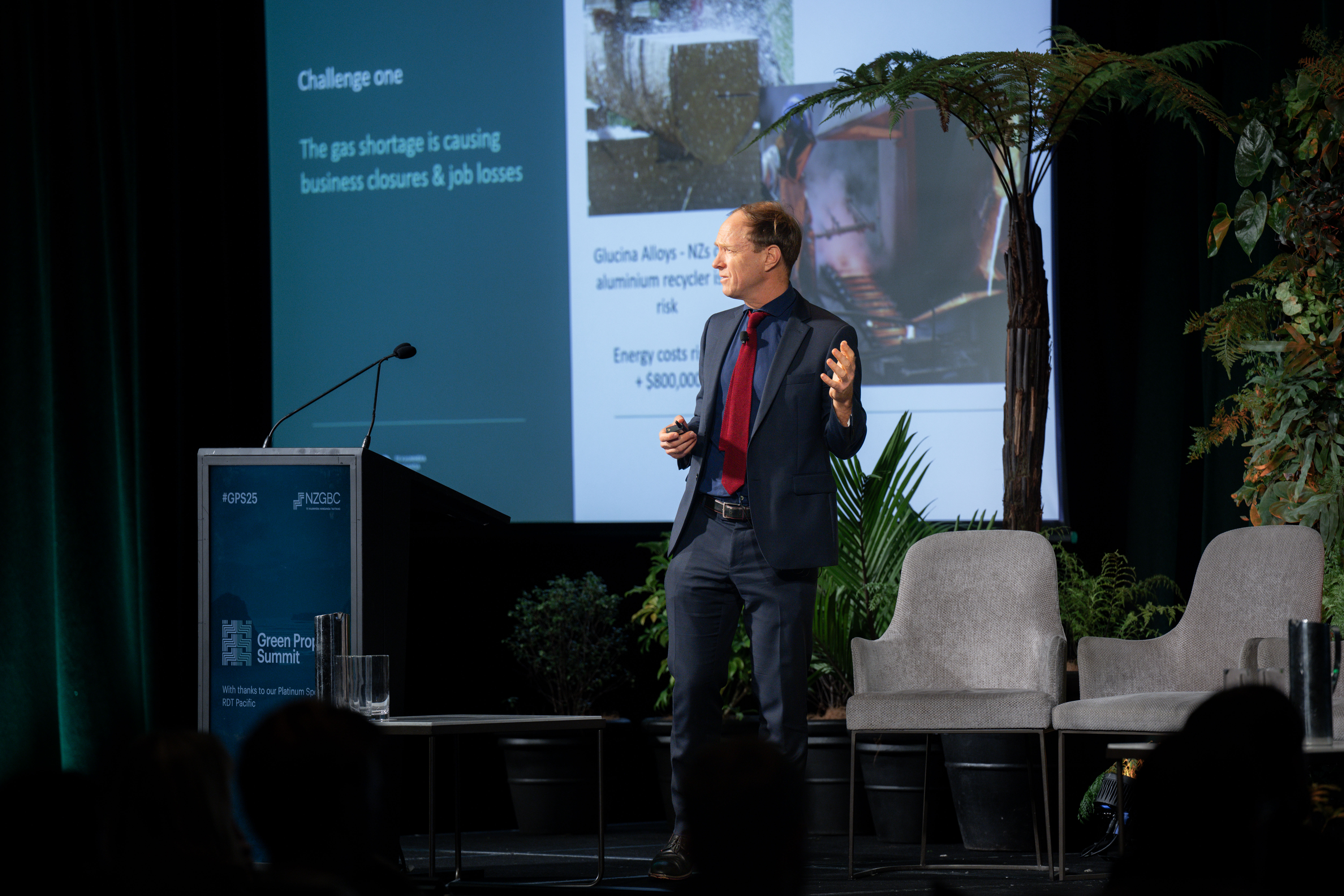Some things just make sense: butter and crumpets, buying socks in pairs, fossil fuel-free buildings.
At this month’s fantastic Green Property Summit, that last one took centre stage. The event wasn’t just a chance to connect and be inspired - it marked the launch of a landmark report showing the essential role buildings must play in solving our energy crisis.
It should go without saying in 2025, but we shouldn’t be connecting brand new homes and buildings to a fossil fuel in terminal decline. The report makes a compelling case: freeing buildings from gas benefits not just households, but also industrial users and the wider energy system. By 2030, homes and buildings are projected to use around a quarter of all gas in Aotearoa.
We’re at a pivotal moment. Businesses are going under due to the high cost or lack of availability of gas. The phase-out of fossil fuels - already critical to our net zero goals, is accelerating due to the dire state of New Zealand’s gas reserves. With businesses closing, jobs lost, and production stalling under high energy prices, how we respond now will shape our economy and society for decades. We can cling to the status quo, or we can embrace proven technologies and transition to efficient, electric alternatives that protect jobs and lower costs.

It's not just the gas production that is under strain. The electricity system is creaking with potential shortages in the near future. The key challenge is producing enough energy at peak demand. The revealing element of the research is that over 40% of the energy needs at peak demand is for heating buildings, homes and hot water. What can heat pumps do? Deliver that energy over 70% more efficiently than a resistance or gas heating system. They are like an elixir for our energy system. Miraculously crushing the peak load, saving gas for industry and cutting electricity demand. Awesome.
The report found that replacing gas and inefficient heaters with heat pumps could save up to 48 Petajoules of gas annually - nearly 40% of current production - and deliver net electricity savings of up to 4,000 GWh per year. That’s enough to power over half a million homes and save households up to $1.5 billion a year.
Decarbonising our buildings frees up energy for industry, supports a just transition, and opens up huge opportunities for our sector. It’s something we should be genuinely excited about.
And there’s more to be energised by. The government’s Warmer Kiwi Homes programme is expanding its insulation subsidy to reach another 300,000 homes. While more ambition and funding are needed, it’s a positive step toward ensuring more Kiwis live in warm, dry, healthy homes. The Hon. Minister Watts is to be congratulated for this step.
We also celebrated the next generation of green building leaders. Congratulations to Adam Bruce, this year’s Future Thinker of the Year, and Jean-Luc Ellis, our second-ever Emerging Leader award winner. A big thank you to last year’s winners, Widi Auliagisni and Francisco Carbajal, who’ve been outstanding ambassadors for our Future Thinkers network. We’re excited to see what they do next.
Even when things make sense, they don’t always catch on. Maybe you’re not a crumpet fan - no amount of butter (if you can spare it in this economy) will change your mind. But ditching a polluting, unhealthy, increasingly expensive fuel for a cleaner, cheaper, electric alternative? That’s a no-brainer.
Some things just make sense. Let’s make it happen!
